Dunlop recently released their new Jimi Hendrix 70th Anniversary Tribute Series. The line includes 4 pedals based on what Hendrix was using in the late ’60s. All of the pedals (except the wah) are enclosed in a small footprint, making them pedalboard-friendly. In addition, these pedals are true-bypass. So lets take a look at these 4 pedals in detail.
Dunlop Jimi Hendrix Limited Edition Fuzz Face 70th Anniversary
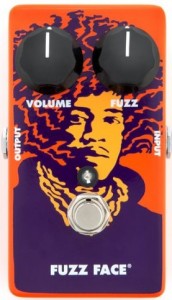
According to Dunlop, this pedal is supposed to be a faithful recreation of a Dallas Arbiter Fuzz from 1969-1970. If this is true, then it would be an amazing fuzz, thats for sure. The fuzz is built using BC108 Silicon Transistors. It would be interesting to see how close this pedal is to Dunlop’s JH-F1 Jimi Hendrix Fuzz that has been on the market for some time. That pedal too uses the BC108 Silicon Transistors. Since the price point of these pedals are relatively similar, perhaps what’s on the inside is around the same as well. All in all, this 70th Anniversary Fuzz is a good price point for a pedal that will get you in Hendrix fuzz territory.
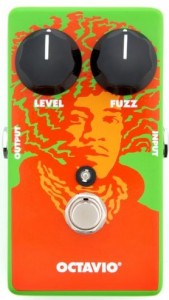
Dunlop Jimi Hendrix Limited Edition Octavio 70th Anniversary Tribute Series
Again, Dunlop claims the Octavio to be an exact reproduction of Jimi’s octave-up pedal. As well, Dunlop also has the JH-OC1 Jimi Hendrix Octavio Pedal that been around as well, and features the cheese-wedge enclosure. The 70th anniversary features controls for Level, Fuzz, and DPDT on/off switch. Couple this pedal with a solid fuzz to drive it a bit, and some good octave up tones are to be had.
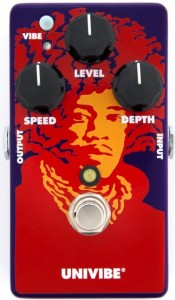 Dunlop Jimi Hendrix Limited Edition Univibe 70th Anniversary Tribute Series
Dunlop Jimi Hendrix Limited Edition Univibe 70th Anniversary Tribute Series
Probably the pedal most will be excited about is the legendary Univibe. This pedal gives that famous heartbeat to the guitar, with options for either chorus and vibrato settings. Controls for Speed, Depth and Level are included to shape those leslie-eque tones to your liking. Jimi famously used the Univibe pedal on Machine Gun, Isabella, and Hey Baby to name a few. This is the pedal to really add that psychedelic vibe to your rig.

Dunlop Jimi Hendrix Limited Edition Crybaby Pedal 70th Anniversary Tribute Series
Last but not least, a recreation of Jimi’s most popular pedal, the legendary wah. At the time, Jimi was using wahs made by Vox. Dunlop’s recreation is definitely more on the crybaby side of things. Enclosed in a sleek black aluminium body, the wah will help make your guitar sound more vocal. Jimi was the king at making his guitar talk, and the wah was a big factor in making this possible.
Well there you have it, the Jimi Hendrix 70th Anniversary Tribute Series. These pedals are indeed limited editions, so I would recommend to act fast if you are interested.
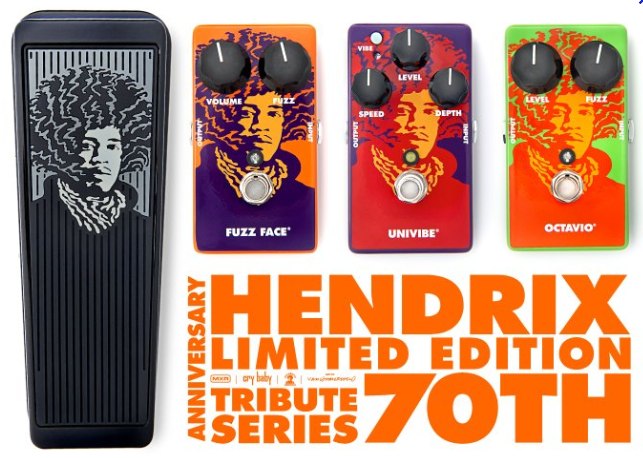
 Amps
Amps Pedals
Pedals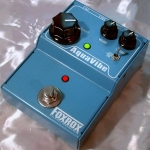
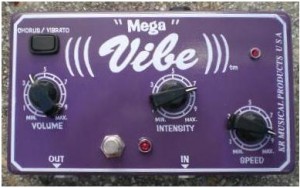 If you are familiar with univibe clones, you know the Megavibe. Many argue that the Megavibe gets the absolute closest to Hendrix’s Machine Gun, at least on the chorus setting. Randy Hansen (also known as the Hendrix Clone) uses a Megavibe, and many say that his tone is closest to Jimi’s. The only downside of this pedal is that they are extremely hard to obtain. You may be only able to find a used one on Ebay at inflated prices, as KR Musical seems to have been out of the scene for a little while now.
If you are familiar with univibe clones, you know the Megavibe. Many argue that the Megavibe gets the absolute closest to Hendrix’s Machine Gun, at least on the chorus setting. Randy Hansen (also known as the Hendrix Clone) uses a Megavibe, and many say that his tone is closest to Jimi’s. The only downside of this pedal is that they are extremely hard to obtain. You may be only able to find a used one on Ebay at inflated prices, as KR Musical seems to have been out of the scene for a little while now.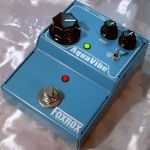 Dave Fox is known for building quality boutique vintage-esqe effects. His Aquavibe is no different, producing that vintage univibe tone, while also adding more flexibility to create different vibe tones such as the ability to change the position of the sweep. The Aquavibe has also been known to have the best vibrato out of all the univibe clones out there. Only downside is that there is about a 1 year waiting list.
Dave Fox is known for building quality boutique vintage-esqe effects. His Aquavibe is no different, producing that vintage univibe tone, while also adding more flexibility to create different vibe tones such as the ability to change the position of the sweep. The Aquavibe has also been known to have the best vibrato out of all the univibe clones out there. Only downside is that there is about a 1 year waiting list.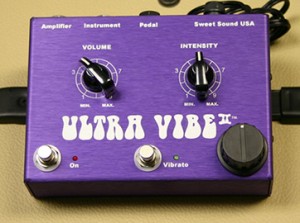 Built by the late Bob Sweet, the Mojo and Ultravibe have been around for awhile, and have been a benchmark for great univibe tones. These vibes are right up there with the aqua and mega vibe.
Built by the late Bob Sweet, the Mojo and Ultravibe have been around for awhile, and have been a benchmark for great univibe tones. These vibes are right up there with the aqua and mega vibe.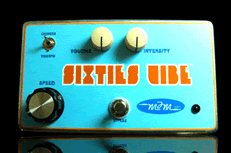 Around the forums, many have been raving about the MJM 60s Vibe. Over at MJM, the 60s Vibe has been modeled after an original univibe. Some really great tones coming from this pedal. Best part is, the MJM 60s Vibe is readily available with no waiting list.
Around the forums, many have been raving about the MJM 60s Vibe. Over at MJM, the 60s Vibe has been modeled after an original univibe. Some really great tones coming from this pedal. Best part is, the MJM 60s Vibe is readily available with no waiting list.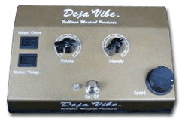 Word around the street is that the original Deja Vibe (gold unit) has some pretty authentic univibe tones. Some have argued that this pedal is closest to the original.
Word around the street is that the original Deja Vibe (gold unit) has some pretty authentic univibe tones. Some have argued that this pedal is closest to the original.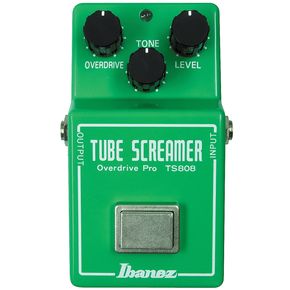 der tube amps. He really liked Vibroverbs and Super Reverbs, usually running them in stereo to fatten up his sound. SRV’s clean tone was quite amazing, which is what Fender amps are popular for. Of course he ran his amps cranked in order to get that tube saturation.
der tube amps. He really liked Vibroverbs and Super Reverbs, usually running them in stereo to fatten up his sound. SRV’s clean tone was quite amazing, which is what Fender amps are popular for. Of course he ran his amps cranked in order to get that tube saturation.